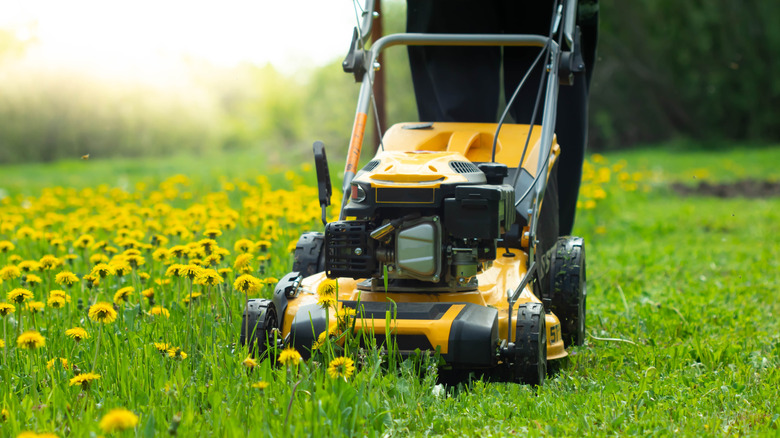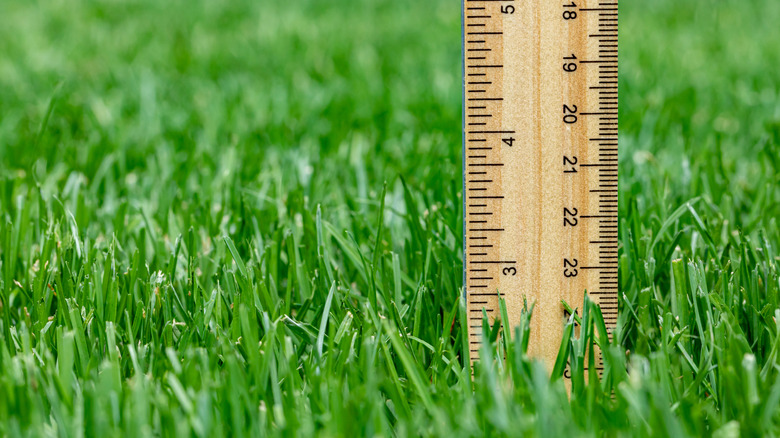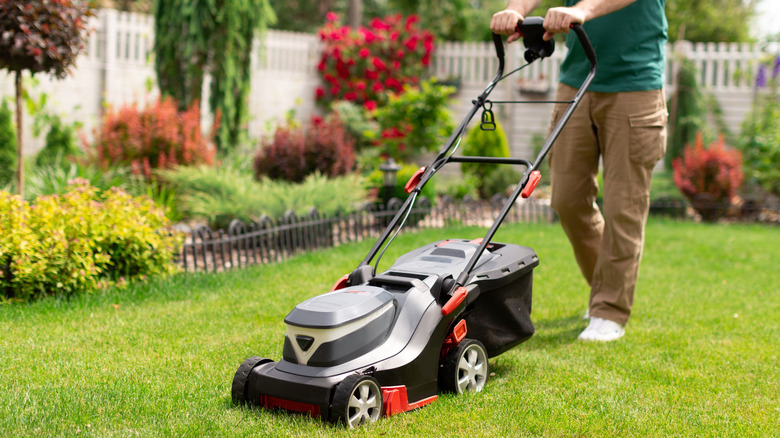The Simple Mowing Technique That'll Help Minimize Weed Growth In Your Yard
For homeowners who work hard to maintain a lush, green lawn, there are few things more frustrating than finding dandelions, crabgrass, and other weeds popping up amongst your carefully tended grass. But it may be even more discouraging to learn that a mistake in your lawn maintenance habits is contributing to the problem. Many people prefer the look of a closely-cropped yard and mow their grass short, but it isn't the best choice for your lawn's overall health. The best mowing technique to promote healthy grass and prevent weed growth is to mow at the appropriate height, which means avoiding cutting it too short.
Cutting your grass too short reduces the surface area that it has for exposure to air and sunlight. These two components are vital for photosynthesis, the process by which grass makes its food. With limited energy, the roots of short grass are weakened, making it more vulnerable to disease, pests, and weeds. At the same time, shorter grass also provides a more hospitable environment for weeds to grow, making it more likely that they'll spread. Fortunately, making a slight adjustment and mowing your grass higher can help prevent weeds from taking over your lawn and leave you with a beautiful, envy-worthy yard.
Mowing your grass high can help control weeds
In your lawn, grass and weeds compete for sunlight and nutrients from the soil. Taller grass typically has a stronger root system and more blades to engage in photosynthesis, so there is much fiercer competition for weeds just starting out than provided by shorter grass. It is particularly difficult for weeds to receive adequate light in this environment because high grass provides effective shade that blocks the weeds from receiving as much sunlight. Many weeds, such as crabgrass and pigweed, require direct sunlight for germination, so they're unable to spread in such conditions. The shade that taller grass provides also helps the soil stay moist and cool. Some of the toughest, most resilient weeds, like crabgrass, grow best in hot, dry conditions, making them less likely to germinate.
So, keeping weeds out of your lawn may be as simple as raising your mower's height. It's generally recommended that you never cut more than one-third of the grass blade in a single mowing. However, the best height depends on the type of grass. For cool-season grasses, like ryegrass, Kentucky bluegrass, fescue, and tall fescue, mow your lawn at a height of between 2.5 and 4 inches. Mow warm-season grasses, such as Bermuda, St. Augustine, and zoysia, to between 1.5 and 3 inches.
Other mowing tips to help reduce weeds
While cutting your grass high can go a long way in keeping weeds at bay, you may want to incorporate some other mowing techniques to keep the crabgrass out of your yard. Make sure that your mower's blades are always sharp. Dull blades tear into the grass, causing jagged edges that can stress it and leave it more vulnerable to weeds and other issues. It's also a good idea to leave the clippings on your lawn rather than collecting them in your mower's bag. The clippings are an excellent source of nitrogen and other essential nutrients, acting as a natural fertilizer that strengthens your lawn and helps it fight off encroaching weeds.
Avoiding mowing your lawn at the wrong time of day can also help reduce weeds. It's best to mow when the grass is dry and the temperature isn't too hot, so stick to late morning or afternoon. When the grass is wet, it can clump up, which can lead to uneven cutting. Try to vary your mowing patterns, too — cutting in the same direction every time can lead to compacted soil, and many weeds, such as dandelions and chickweed, thrive in compacted soil. And consistent, proper mowing combined with the use of a pre-emergent provides effective, double-duty control.


